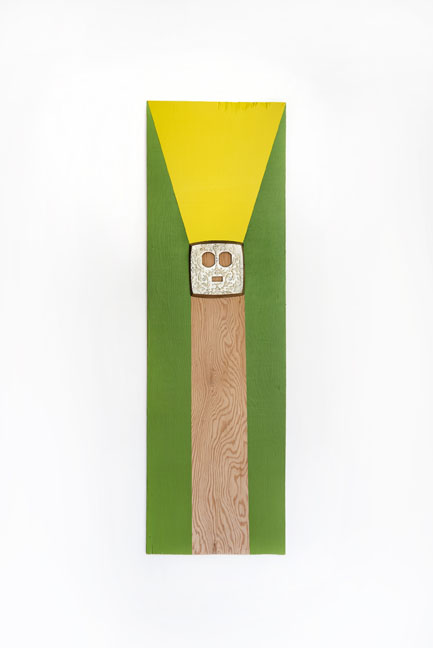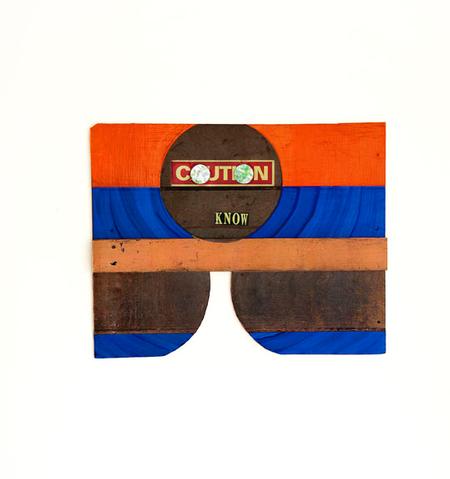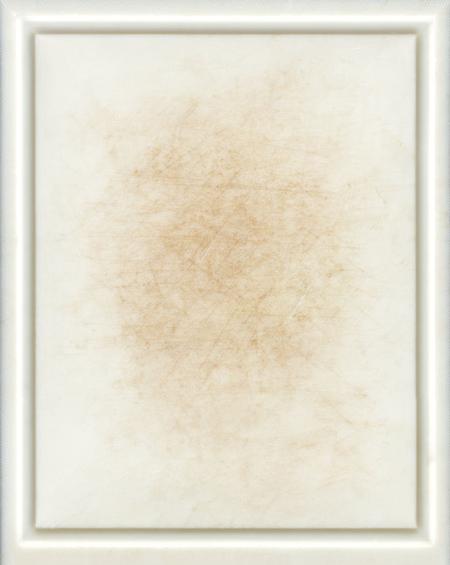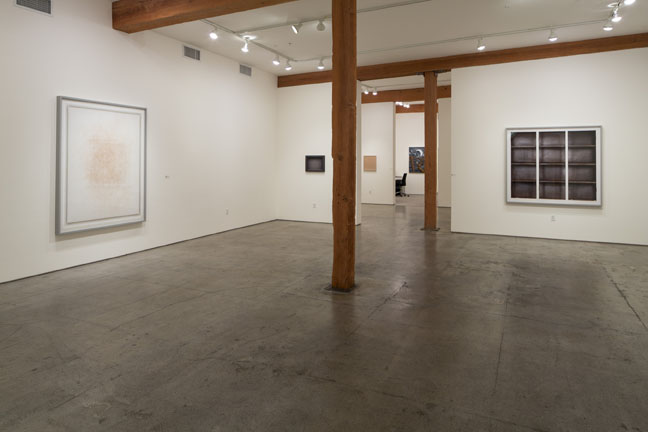Two mini exhibitions are currently on view at Elizabeth Leach Gallery in Portland, Oregon. Nestled in the poetically named Pearl District amongst other galleries, the space is divided into two open rooms. This is a gallery’s gallery, with clean design and friendly folk at the front desk willing to have a conversation with an ignorant visitor.
In the front room are the large photographic constructions from Isaac Layman’s “Funeral.” Digitally layering many images of the same object, the artist creates hyperreal pictures of such banal items as a cutting board or a sink. This compulsive documentation of every inch of an object creates archives or artifacts of its activity and person who used them. The picture of the tinfoil and roasting pan spattered and stuck with juices and skin from a fish takes on the significance of a Last Meal. A view into what looks like the foam lining of a coffin sends shivers up my spine; the perspective of the work looms on the wall, ready to swallow me up. Without any explanation, Layman’s pieces would be nicely printed, sharply focused images of unspecial things. The care with which the artist catalogs these few unremarkable items mirrors the grieving process. Those left behind after a death are often depicted staring ahead, fingering the sleeve of a sweater belonging to the deceased. A favorite coffee mug or hat becomes a repository for a whole life. Layman understands the animate quality of an object, its connection with a human life and the way both continue on after the meal has been made or the medicines taken.

Michael Lazarus, no title.
acrylic paint and found material on wood
2013. 40.25 x 27.25 inches. Photo courtesy of the gallery.
Michael Lazarus’s “Recent Works” are composite works of a different nature. Beginning with fragments of commercial signage and lettering, the artist combines text and bright blues, greens and oranges on panel, often letting the grain of the wood show through. I have to take issue with the gallery’s claim that, “his work blurs the boundaries of the simultaneously existing dualities of everyday life.” I do not see “anxiety and joy” or “hardship and pleasure” in these pieces. I see cleanly composed work with a strong graphic element and vaguely humanoid features in the arrangement of reflective plastic pieces and electrical outlet covers. The attempt to imbue Lazarus’s work with existential meaning detracts from its visual value, at least for me. The loops, patterns and physical qualities of the pieces on view can speak for themselves. Shown together, they speak to the artist’s consistent vision and process.

Michael Lazarus. Know, 2013. Acrylic paint, mirror, adhesive lettering and wood. 18 x 22 ½ inches. Photo courtesy of the gallery.
The intent and process behind Isaac Layman’s beguilingly uncomplicated photographic works enriches his imagery but this is not – and does not have to be – the case with every artist. Public radio saved me yesterday on the drive home from Oregon, and I listened to a critique of James Turrell’s Guggenheim exhibition attributing the artist’s explosive popularity to his sincerity. There is no irony or art world mocking in his expansive light installations. Maybe we could use a few more artists who make art, straight and simple. Art that needs only the barest of artist statements.

Isaac Layman, Cutting Board.
photographic construction, archival inkjet print
74 x 59 inchesPhoto courtesy of the gallery.
For more information visit here.



